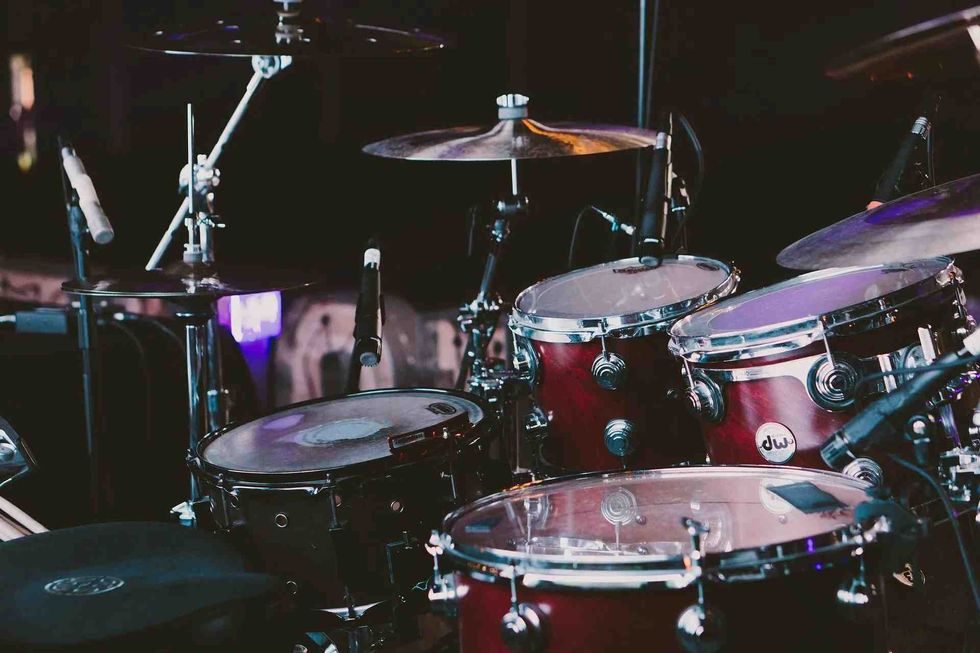111 Interesting Facts About Musical Instruments: You Should Know!

There is a famous saying that roughly translates into 'music has no language', and we can not but say that it is absolutely true.
Music is something that connects people from across the world belonging to different cultures to come together and enjoy quality music. One of the most important roles in the creation of music is played by different musical instruments.
They say music edifies the soul. The pure sound and melody of musical tunes are nectar to the ears.
One of the most important ways in which sound is created apart from with the vocal cords is by a musical instrument. A musical instrument is any machine/equipment which has been designed to create musical sounds.
Musical instruments have been an essential part of human society for thousands of years. The thrill of being able to learn and master a musical instrument is unmatched. Musicians rely on musical instruments either to create a sound of their own or to create their own renditions of other sounds from other musicians!
The most common musical instruments that come to mind are the guitar, piano, drums or the drum kit, violin, and the flute, amongst many others. Even the most common instruments, however, are very hard to master sometimes, which is why we should brush up our knowledge regarding the facts about musical instruments.
Musical instruments have gone through various evolutions throughout history. A musical instrument was often used as a way to relax and enjoy free time.
In fact, sounds from musical instruments are often thought to be therapeutic since these sounds lead to the release of positive hormones! Any sound, like the twang of a guitar or violin as the strings vibrate or the keys of a piano, can provide relief.
A band is generally a collection of various musicians, with several musicians being referred to as instrumentalists. An instrumentalist is a person who knows how to play a musical instrument.
So, when you see a gig by a musical band, where everyone is jamming on their musical instruments, you know they are having fun. Any band generally contains guitar or variations of guitar (like the bass), piano, a drummer (someone who plays drums), and maybe additional musical instruments.
An orchestra is also a similar group, generally with a larger number of musical instruments. The sound that they create is magical indeed.
Let us look at some facts about musical instruments while answering some important questions along the way! If you love learning about music be sure to also check out musical baby names and Matilda the musical facts.
How many instruments are there in music?
The thing about musical instruments is that there are a lot of types of instruments and those also have lots of variations. Take for example a common musical instrument like the guitar which has variations like the ukulele, bass, and electric guitars.
The main four types of musical instruments can be classified as stringed instruments, wind instruments, membrane instruments, and keyboard instruments or stringed instruments, brass instruments, wind instruments, and percussion instruments with additional sub-types like keyboard instruments and electronic instruments.
Let us look at these types of musical instruments in a bit of detail :
Stringed instruments: A stringed instrument is a musical instrument that contains one or more strings and happens to make a sound when the strings are either touched or plucked. Examples of this type of musical instrument include guitar, violin, bass, banjo, cello, ukulele, harp, and sitar.
Wind instruments: Wind instruments are musical instruments in which the sound is produced due to the vibration of air. Generally, this happens when a person blows into a musical instrument. Examples include flute, bagpipes (fun fact, bagpipes happen to have a lot of holes for air vibration), clarinet, piccolo, oboe, and bassoon.
Membrane instruments: These musical instruments produce sound by the vibration of stretched membranes. Examples of these can include drums, talking drums, tambourines, and mridang.
Keyboards instruments: These musical instruments are played with the help of keys; these can be considered percussion instruments as well with minor differences. The piano can be an example although it is part of other families as well. Synthesizers and harmoniums are also part of this family.
Brass instruments: Brass instruments are actually very similar to wind instruments although they are generally made of brass. Metal horns are actually brass musical instruments. Metal horns are included with examples like the trombone, trumpet, cornet, and tuba.
Percussion instruments: These are those musical instruments that produce sounds by striking, scraping, or shaking. Examples include the xylophone, drums, various parts of the drum kit (like a snare drum, bass drum), gong, and maraca.
What is the first known musical instrument?
Musical instruments have been a part of human history, ever since claws were a thing. Primitive people actually used animal horns to produce sounds.
Animal horns generally had holes that you could blow through, essentially making them the first wind instruments!
Obviously, there have been a lot of changes in the materials we use to make instruments now and the sounds differ a lot. However, these ancient musical instruments were the stepping stone to more beautiful tunes. Let us try to find out about their history.
Funnily enough, the oldest instrument in history is a wind instrument. The world’s oldest instrument is the 'Neanderthal Flute' which is 60,000 years old!
This instrument was the world’s first flute. Imagine a world without wind instruments, how bland that would be.
The instrument was found by archaeologists in the Divje Babe cave near the Idrijca River in Slovenia. The excavation was led by Ivan Turk in 1995 and his team found the 'bone flute'. This actually gives us a lot of insight into the music-producing ability of primitive people (homo neanderthalensis).
However, the oldest actually playable instrument was discovered by Chinese archaeologists, which also happened to be a flute! This flute, which has seven holes, was made from the bone (hollow) of a very large bird. It is about 9000 years old (from the Neolithic period). This was actually preserved, repaired, and played again in 1999.
The fun thing is, the eight oldest instruments in this world were all flutes. This may be because flutes are actually very easy to build. They can also be made from various kinds of materials.
Who invented musical instruments?
We know that the oldest instrument in the world is the 'Neanderthal Flute', which was made around 60,000 years ago. This lets us know that instruments have been entertaining people forever.
During earlier times, instruments were used by kingdoms to celebrate victories or to make people aware of impending danger. Musicians were also brought into courts to entertain kings and courtiers.
Let us try to find out about the people who were responsible for inventing musical instruments.
Experts believe that since the oldest instrument was from the Neanderthal Era, the Neanderthals were the first to invent musical instruments. The miniature flute that they invented only had two holes and was made of old wood that was found during that time.
Later, animal skins were used to make the world's first drum. The concept was the same back then as well, a stretched membrane that was struck to produce sound.
According to the Bible, the father of musical instruments is Jubal, son of Lamech. He is believed to be the first musician in the world.
His appearance was only mentioned in the first book of the Bible, Genesis. He was believed to be a descendant of Cain. He was described as 'the father of all such as handling the harp and organ'.
The piano was invented in its entirety, by Bartolomeo Cristofori of Padua with four octaves and two keyboards.
The modern flute was invented by a German inventor by the name of Theobald Boehm. He also advanced the fingering system, known as the 'Boehm system'.
The first inventor to produce the acoustic guitar design was Antonio Torres Jurado.
The trumpet was developed by Anton Weidinger in the 1790s.
The earliest evidence of the modern violin dates back to the 1530s. Invented by Gaudenzio Ferrari, it only had three strings at the time.
The first drums were created from alligator skin!

Which instrument is hardest to master?
Learning any musical instrument is a big achievement. Being able to play in front of a crowd, whether it be solo or in a band or orchestra is a highlight of anyone’s life.
This begs us to ask, 'which instrument is the toughest to learn?' Musicians unanimously agree that every instrument in this world is tough but there are some musical instruments that cause more trouble than others. Some musical instruments are easy to pick up but very difficult to master!
Let us look at the four toughest musical instruments:
French horn: This instrument is part of the family of brass instruments. The first thing that people often get wrong is the lip placement as any change in that can alter the sound drastically.
The main pipe is actually really long, though its round and big shape make it one of the most awkward instruments to hold. In fact, an orchestra almost always has a backup horn player since the first player might get tired!
Violin: For beginners, the absence of frets (divisions) on the board is a nightmare as you have to physically remember every position. The thing is, it is one of the hardest musical instruments when it comes to producing a beautiful sound since it's really tough to produce the correct tone and pitch.
You have to put it on your shoulder and play which isn’t a problem in the beginning but when you start to learn complex notes, the finger position keeps going up and down.
Piano: A piano might look easy since you have to sit and play keys but that is not the case at all. The piano is very complex since it requires excellent concentration and hand and foot coordination.
You need to play the bass notes with one hand while playing the chords with the other hand, all while reading the notes and worrying about turning pages and kicking on the pedal. All this and focusing on playing beautiful and complex sounds!
Drums: Drums are a very common musical instrument as the drummer bangs hard on the plastic membrane but even drums are more complex than you think. The thing about drums is that they are very difficult to coordinate with other instruments, especially in an orchestra or a band.
Apart from that, the foot and hand coordination required to play every part of a drum kit efficiently is tremendous which is why a second person is required to turn the pages!
The Most Popular Musical Instrument
There will be a debate about what is the 'most popular' musical instrument. Many argue that it's the guitar while many say it's the piano. Read on to know more about facts regarding popular musical instruments:
Young kids are taught instruments since they help in proper brain functioning and are a great way to unwind. Musical instruments are so popular that they have been made more accessible with the creation of apps that allow you to play instruments on any gadget that you have; that is the appeal of these instruments.
The list below tells us about some of the most popular instruments around the world (from various sources and studies):
Guitar: Guitars are very basic and simple in their nature which is why they are so popular. The fact that guitars can produce even the most minute sounds with a basic structure is something to marvel at.
Piano: Pianos are tough to learn but once you do, there is nothing more intense and satisfying. When you listen to any band member playing a piano intro, every note seems to touch the soul somehow.
Violin: If you’ve ever heard a violin piece you’ll notice that the swaying of the bow on the strings creates an atmosphere where you can close your eyes and listen peacefully. They are an essential part of any orchestra.
Drums: Drums are fun to play, that's the best part. With any drummer you see, you’ll notice that they always bop their head to the rhythm which shows how enjoyable drums are! Being a drummer is also tough since you have to coordinate with and balance a lot of things at the same time.
Saxophone: The sheer range of this instrument is amazing. This wind instrument adds a peppy extra layer to any song that you'll ever hear, hence the appeal.
Flute: The thing about the flute is that it is very portable. Flutes are an essential part of marching bands and orchestras since they produce a sweet tune when the air blows out through the holes.
Voice: People believe that the first instrument ever to be created is actually the human voice. This might as well be true since you can modulate your voice in an infinite number of ways which makes it the perfect instrument!
With the advent of social media and video-sharing platforms, new musicians are getting a great platform to showcase their talents. You can easily access music compositions from lesser-known artists from across the world in different languages.
Without any doubt, the music reflects the culture and heritage of a particular region. By listening to the musical compositions from across the world, you can not but marvel at the universality of music as an art.
One of the biggest reasons behind diverse types of music being heard in different countries is the various types of musical instruments that are in use.
While western countries are now more inclined towards using digital technology to create music, many countries in Asia and Africa still use traditional musical instruments. The natives in these regions make use of natural materials like wood, bamboo, stone, or animal skin to manufacture different musical instruments and enjoy their local music.
The depth and soul that music produced with hand-made instruments possesses can not be matched by electronic mediums.
Sadly, this type of music is slowly dying away. As technology proliferates different regions, more and more musicians are opting for digital tools for the creation of their music.
However, let us hope that the use of traditional instruments for the creation of music continues to thrive and survive. After all, how can sound synthesized using a computer program or a mobile application compare with the skill and years of practice that a trained musician possesses?
Here at Kidadl, we have carefully created lots of interesting family-friendly facts for everyone to enjoy! If you liked our suggestions for 111 Interesting facts about musical instruments: You should know! then why not take a look at Broadway musical names, or high school musical quotes?
We Want Your Photos!
More for You
Bachelor of Science specializing in Human Anatomy

Joan AgieBachelor of Science specializing in Human Anatomy
With 3+ years of research and content writing experience across several niches, especially on education, technology, and business topics. Joan holds a Bachelor’s degree in Human Anatomy from the Federal University of Technology, Akure, Nigeria, and has worked as a researcher and writer for organizations across Nigeria, the US, the UK, and Germany. Joan enjoys meditation, watching movies, and learning new languages in her free time.
Disclaimer
1) Kidadl is independent and to make our service free to you the reader we are supported by advertising. We hope you love our recommendations for products and services! What we suggest is selected independently by the Kidadl team. If you purchase using the Buy Now button we may earn a small commission. This does not influence our choices. Prices are correct and items are available at the time the article was published but we cannot guarantee that on the time of reading. Please note that Kidadl is a participant in the Amazon Services LLC Associates Program, an affiliate advertising program designed to provide a means for sites to earn advertising fees by advertising and linking to Amazon. We also link to other websites, but are not responsible for their content.
2) At Kidadl, we strive to recommend the very best activities and events. We will always aim to give you accurate information at the date of publication - however, information does change, so it’s important you do your own research, double-check and make the decision that is right for your family. We recognise that not all activities and ideas are appropriate for all children and families or in all circumstances. Our recommended activities are based on age but these are a guide. We recommend that these ideas are used as inspiration, that ideas are undertaken with appropriate adult supervision, and that each adult uses their own discretion and knowledge of their children to consider the safety and suitability. Kidadl cannot accept liability for the execution of these ideas, and parental supervision is advised at all times, as safety is paramount. Anyone using the information provided by Kidadl does so at their own risk and we can not accept liability if things go wrong.
3) Because we are an educational resource, we have quotes and facts about a range of historical and modern figures. We do not endorse the actions of or rhetoric of all the people included in these collections, but we think they are important for growing minds to learn about under the guidance of parents or guardians.







